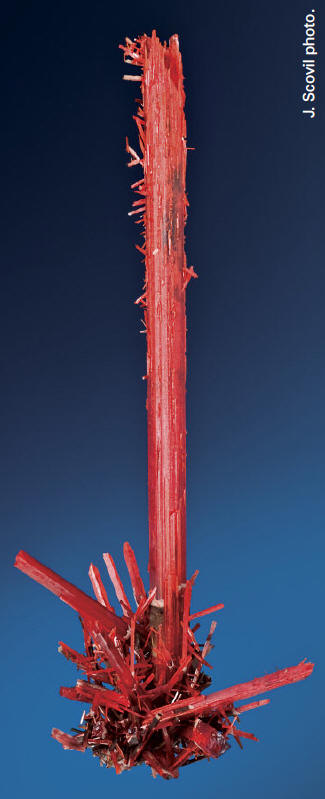
Crocoite from “2010 Pocket”,10.1 cm high. Gobin specimen.
The “2010 Pocket” produced a number ofworld-class specimens with great colorand exceptional crystal size. Crocoitesfrom this find are surely among theworld’s best.
Following is the first writtenaccount of this recent find.
DUNDAS AREA – WORLD PRIME PRODUCEROF CROCOITE SPECIMENS
There are two crocoite producingregions in the Western Tasmania, theHeazlewood district, and the Dundas district.
The Dundas Ag-Zn-Pb mining fieldis located about 10 km east of Zeehan,and contains a number of mines. Two ofthem are especially productive in termsof crocoite specimens – Adelaide andRed Lead. The Adelaide mine however,produces much bigger quantities of highquality specimens, including occasionalfinds of great pockets filled with theworld’s best crocoite specimens.
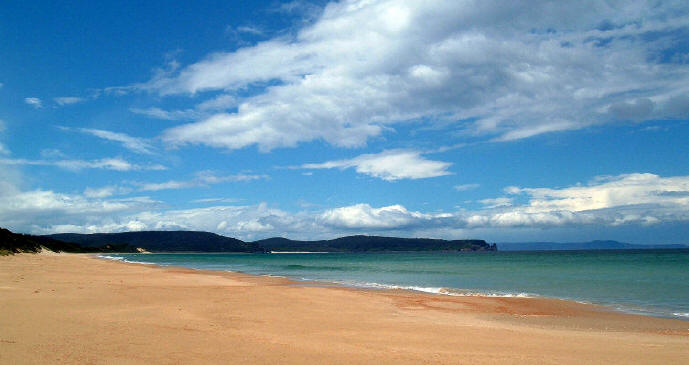
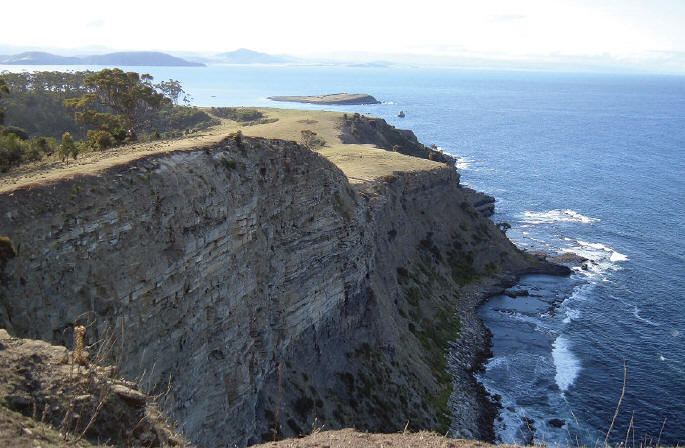
Tasmania landscapes - The Neck Beach, Bruny Island (upper photo) and Maria Island (lower photo). E. Aheimer photos.
HISTORY OF THE ADELAIDE MINE
The deposit mined recently at theAdelaide mine was discovered in 1887.
The most important period of a largescalemining for lead and silver tookplace there from 1890-1915. Crocoites 1880’s. It is interesting to note that thefirst workings specifically targeting crocoitespecimens were mined in 1899!
After a long period of inactivity, the minewas reopened in 1957 exclusively forspecimens. The first owners did not havemuch luck mining for crocoite. Fortune changed when the mine was acquired byFrank Mihajlowits.
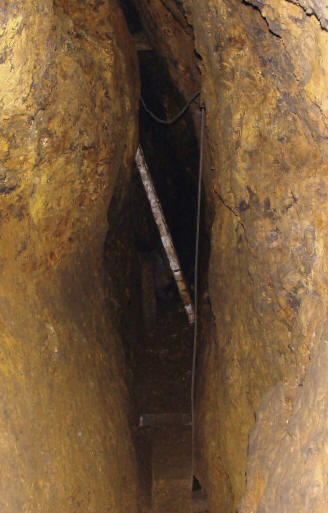
One of mine tunnels in Adelaide mine. A. Wright photo.
For more than 30 years (beginningin 1973), the Adelaide Mine was ownedby Frank Mihajlowits. His dedicated collectingbrought to the world some of thevery best crocoite specimens. In July2004, The Adelaide Mining Company Pty.
Ltd. (TAMC) purchased the AdelaideMine lease and a new specimen miningprogram commenced.
The small-scale exploitation of themine is handled by only a few miners.
TAMC has a rule that at least two peoplehave to be present on the mine leasewhenever there is any undergroundwork being done.
TAMC started working in 2004 andfound their first good pocket (the PremierePocket) two years later in July,2006. Since then, they have found onlyone small pocket (Kurt’s Pocket) late in2009 and there has been nothing else.
The majority of mining until now hasbeen hard work with no great return.
GENERAL GEOLOGY OF THE DUNDASAREA
The geology ofWestern Tasmania isvery complex. The region is underlain byrocks dating from Mid Proterozoic toCenozoic age. Throughout this time, thispart of Australia has been very activegeologically. The rocks in Dundas area have been subjected to metamorphism,orogenic movements, intrusions, faulting,and mineralization.
Pb-Zn-Ag vein deposits at Dundasare associated with a Devonian intrusiveevent that emplaced granites into thehost Cambrian serpentinites and sedimentaryrocks, and to a lesser degreePrecambrian slates. These veins are theprimary ores for the metals in the Adelaidemine. The host rocks have been altereddue to the hydrothermal activityrelated to the granitic intrusions andvein mineralization. Such alteration ofsheared ultramafics is manifested by Fe-Ca-Mn carbonates, quartz, and chromianmuscovite in an unusual rock type calledlistwanite. Close to the present day surface,the ore veins are strongly altereddue to the deep Cenozoic weathering.
Ca-Fe-Mn carbonates frequently dissolvedduring the process of weatheringand were replaced by gossans. The gossansformed during oxidation are veryporous with numerous open spaces,which are great places for the growth ofcrocoite and other secondary minerals.
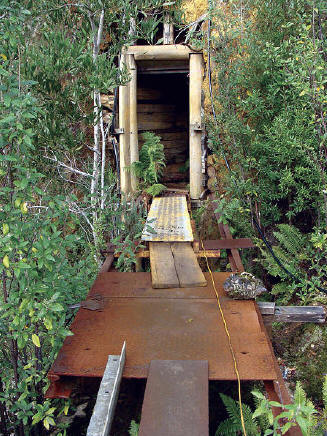
Main adit to Adelaide mine. A. Wright photo.
GEOLOGY AND MINERALOGY OF THEDEPOSIT
The ore vein worked at the Adelaidemine is hosted by listwanite. The veinstrikes NNW, dipping 50-60°NE, and is 13m wide by 130 m long. The zone of oxidationreaches over 100 m in depth. Theprimary ore consisting of galena, sphalerite,pyrite, and jamesonite occursbelow the oxidation zone and is surroundedby carbonates (predominantlyMn-siderite and dolomite) and serpentinite.
From the collectors’ point of view,the most important mineralization occursin gossans within the oxidationzone. The gossans host a number of mineralsincluding, but not limited to crocoite,cerussite, dundasite (type locality),mimetite, coronadite, bindheimite,goethite, gibbsite, and philipsbornite. Ofthese minerals, only four are the subjectof collector’s interest.
CerussiteYellow crystals of cerussite forming quitebig clusters, were found mainly in the70’s. Greenish cerussite crystals are alsoknown from the locality. Presently, cerussitein macroscopic form is rarely found.
It is however, known from a number of different mines in the region where it occursas spectacular specimens with complextwinning. At the moment, the mineis approaching the zone where there isagain a chance to find cerussite.

Adam collecting specimens in the area of 2010 Pocket, note dirt on his clothes. B. Stark photo.








 YueGongAnBei 44051102000467
YueGongAnBei 44051102000467


 |
|